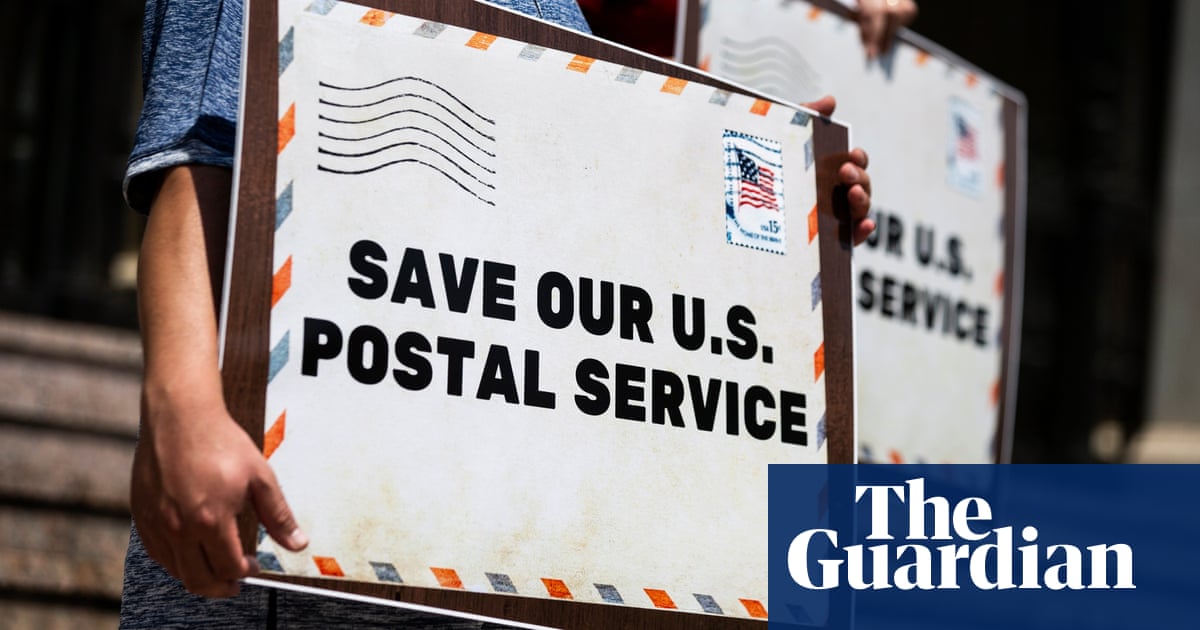
More than 500,000 workers at the United States Postal Service (USPS) will be handling billions of deliveries through the holidays. For hundreds of them, this may be their last Christmas at their current mail sorting facility and workers are warning the impact on consumers will be severe.
The appointee as postmaster general under Donald Trump, Louis DeJoy, is currently implementing a 10-year “Delivering for America” austerity plan that will slash jobs and close sorting centers.
The plan is being implemented amid calls to have DeJoy ousted from the post and, in a rare instance of bipartisan unity, both Republican and Democratic officials have recently criticized DeJoy over the consolidation of USPS facilities – a move DeJoy claims will transform the USPS network for the better.
Only the postal board of governors has the authority to remove DeJoy from his position, but the Biden administration has delayed nominating replacements to the board. This has left DeJoy secure in his position for the time being as a petition with more than 40,000 signatures is circulating to call on Biden to appoint two replacements to the board.
Currently 30 mail processing facilities in the US are under review for consolidation. An average rate of 25 jobs would be lost per consolidation while hundreds of other workers would be forced to relocate, and local residents would be left with slower mail services. That number of consolidations is expected to climb to 400 sorting and delivery facilities under DeJoy’s plan.
One of the facilities under review in Lehigh Valley, Pennsylvania, would shift mail processing services to Harrisburg, Pennsylvania, 90 miles away – a move postal workers and union officials have criticized.
The Pennsylvania Postal Workers Union president, Mike Stephenson, said that a previous consolidation from Lancaster to Harrisburg resulted in significant mail service delays.
“We went from if you were mailing a postcard or birthday card to your nextdoor neighbor, instead of it being there the next day when we were still processing, it was there five days more or later and Harrisburg was overwhelmed at that time,” said Stephenson.
He also criticized claims of cost reductions for the consolidations, given the trucking and transportation costs to run mail back and forth to Harrisburg rather than processing it in Lehigh Valley.
“It will eliminate jobs, good jobs, eventually in Lehigh Valley, and it’s going to delay the mail,” said Stephenson. “It’s one more process in the 10-year plan that DeJoy put in when Trump appointed him to destroy the postal service.”
Stephenson said when he requested information and data to demonstrate cost savings, he received redacted documents from USPS and was told the redactions were to protect the information from competitors.
Kevin Gallagher, vice-president of the Pennsylvania Postal Workers Union, also criticized the USPS claim about savings, given the costs of transporting mail to and from Harrisburg and the lack of capacity for Harrisburg to handle the added mail.
“These are the things that I think the public and especially businesses should know that once they start transporting this mail, you’re probably adding a day or two days minimum to mail coming back,” said Gallagher. “We don’t see how it’s going to have any benefit whatsoever and it’s going to further delay mail and cause problems for customers and businesses.”
Other mail processing consolidation reviews have raised concerns and criticisms over the impacts on workers and mail service.
In West Virginia, workers and both of West Virginia’s US senators, the Democrat Joe Manchin and Republican Shelley Moore Capito, have expressed concerns over plans to consolidate a mail sorting facility in South Charleston, moving the mail sorting and 800 jobs out of state to Pennsylvania.
In Knoxville, Tennessee, postal union leaders and workers have criticized plans to consolidate mail sorting to Louisville, Kentucky.
“I don’t believe there’s honesty,” John Macon, the local president at the Mail Handlers Union Local 329, told a local NBC news affiliate about the USPS plan. “You’re going to send processing from one city or several cities moving to another city that’s overcrowded.”
A longtime postal worker in Tennessee who requested to remain anonymous criticized the consolidation plans, likening them to previous plans that were abandoned after opposition, including a plan to shift postal services to the office supplies retailer Staples and consolidation plans for other facilities that were deferred after local opposition.
“I am disappointed with the lack of response from our union leadership at the national level regarding the most radical realignment of postal operations that will impact timely service and the lives of postal workers,” they said. “I am disappointed that I spent endless time and energy opposing multiple consolidation and closure plans over three decades only to see cursory opposition now. I am disappointed that all of this may result in privatization of our great institution.”
Steve Hutkins, a retired NYU English professor who founded and operates the advocacy group and website Save the Post Office, said the drastic network changes at the USPS under DeJoy are occurring with little transparency and oversight, especially given the impacts of the changes. Public meetings held on the facility reviews have yielded little information and have been held during business hours when many members of the public are working.
“Thousands of postal jobs will be eliminated, and tens of thousands of employees will be faced with relocating to a new job, possibly a couple of hundred miles away, or ending their careers at the Postal Service,” Hutkins said. “The consolidations will also create excess space in processing facilities that will then be used to house a sorting and delivery center, which relocates letter carriers away from post offices. The carriers will need to drive 10 or 20 miles to their routes, which will increase costs and pollution. And the excess space at the post office, where the carriers used to work, will lead to post office closures and relocations of retail services to smaller spaces. In the meantime, postal rates go up, volume goes down, jobs are eliminated, service deteriorates. And what comes next?”
I
Don Sneesby, president of National Postal Mail Handlers Union Local 316 which represents postal mail handlers in Washington and Alaska, said the impact of the cuts was already being felt. “We’re sad to see the decay of service standards and hope the postal service will reconsider and heavily weigh the impacts on our customers and our employees,” he said.
“Back before these consolidations, if you mailed a letter anywhere in Washington except for near Vancouver, 92% of the time it would be delivered overnight, now it’s two days even for local mail,” Sneesby added.
A spokesperson for the USPS rejected criticisms of the facility reviews, stating in an email: “The facility review will not result in the closure of these facilities or career employee layoffs. The goal of this review is to improve customer service and to achieve significant cost savings through operational precision and efficiency. Business mail entry, post office, station and branch retail services are not expected to change, and delivery services will not slow down as a result of this review.”
They added in response to criticisms on the transparency and information from USPS in regard to these facility reviews: “The Postal Service will work closely with its unions and management associations throughout the facility review and will continually monitor the impact of any changes that are implemented and will adjust plans as necessary and appropriate. The Postal Service remains committed to the exceptional transparency we have applied throughout the network modernization process – including regular briefings with Congress, unions, industry partners and public input sessions.”












